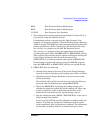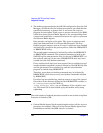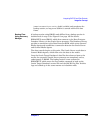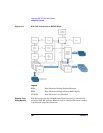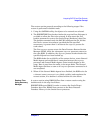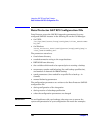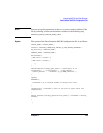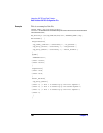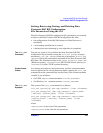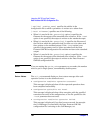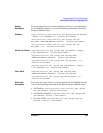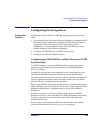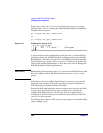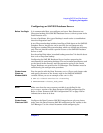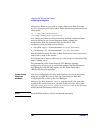
Integrating SAP R/3 and Data Protector
Data Protector SAP R/3 Configuration File
Chapter 2 161
Setting, Retrieving, Listing, and Deleting Data
Protector SAP R/3 Configuration
File Parameters Using the CLI
The Data Protector SAP R/3 configuration file parameters are normally
written to the Data Protector SAP R/3 configuration file after:
• the configuration of the SAP R/3 instance in Data Protector is
completed.
• a new backup specification is created.
• a backup that uses balancing by time algorithm is completed.
The util_cmd
Command
You can set, retrieve, list, or delete the Data Protector SAP R/3
configuration file parameters using the util_cmd -putopt (setting a
parameter), util_cmd -getopt (retrieving a parameter), or util_cmd
-getconf (listing all parameters) command on the Data Protector SAP
R/3 client. The command resides in the <Data_Protector_home>\bin
(Windows systems), /opt/omni/lbin (HP-UX and Solaris systems), or
/usr/omni/bin (other UNIX systems) directory.
Cluster-Aware
Clients
In a cluster environment, the environment variable OB2BARHOSTNAME
must be defined as the virtual hostname before running the util_cmd
command from the command line (on the client). The OB2BARHOSTNAME
variable is set as follows:
• On UNIX: export OB2BARHOSTNAME=<virtual_hostname>
• On Windows: set OB2BARHOSTNAME=<virtual_hostname>
The util_cmd
Synopsis
The syntax of the util_cmd command is as follows:
util_cmd -getconf[ig] SAP <sap_instance> [-local <filename>]
util_cmd -getopt[ion] [SAP <sap_instance>] <option_name>
[-sub[list] <sublist_name>] [-local <filename>]
util_cmd -putopt[ion] [SAP <sap_instance>] <option_name>
[<option_value>] [-sub[list] <sublist_name>] [-local
<filename>]
where:
<option_name> is the name of the parameter
<option_value> is the value for the parameter



